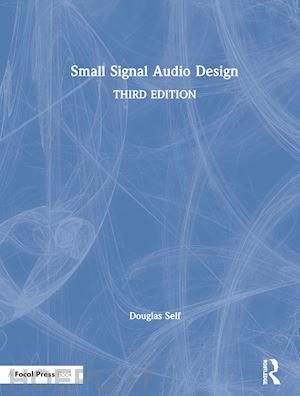Small Signal Audio Design is a highly practical handbook providing an extensive repertoire of circuits that can be assembled to make almost any type of audio system. The publication of Electronics for Vinyl has freed up space for new material, (though this book still contains a lot on moving-magnet and moving-coil electronics) and this fully revised third edition offers wholly new chapters on tape machines, guitar electronics, and variable-gain amplifiers, plus much more. A major theme is the use of inexpensive and readily available parts to obtain state-of-the-art performance for noise, distortion, crosstalk, frequency response accuracy and other parameters. Virtually every page reveals nuggets of specialized knowledge not found anywhere else. For example, you can improve the offness of a fader simply by adding a resistor in the right place- if you know the right place. Essential points of theory that bear on practical audio performance are lucidly and thoroughly explained, with the mathematics kept to an absolute minimum. Self’s background in design for manufacture ensures he keeps a wary eye on the cost of things. This book features the engaging prose style familiar to readers of his other books. You will learn why mercury-filled cables are not a good idea, the pitfalls of plating gold on copper, and what quotes from Star Trek have to do with PCB design. Learn how to: make amplifiers with apparently impossibly low noise design discrete circuitry that can handle enormous signals with vanishingly low distortion use humble low-gain transistors to make an amplifier with an input impedance of more than 50 megohms transform the performance of low-cost-opamps build active filters with very low noise and distortion make incredibly accurate volume controls make a huge variety of audio equalisers make magnetic cartridge preamplifiers that have noise so low it is limited by basic physics, by using load synthesis sum, switch, clip, compress, and route audio signals be confident that phase perception is not an issue This expanded and updated third edition contains extensive new material on optimising RIAA equalisation, electronics for ribbon microphones, summation of noise sources, defining system frequency response, loudness controls, and much more. Including all the crucial theory, but with minimal mathematics, Small Signal Audio Design is the must-have companion for anyone studying, researching, or working in audio engineering and audio electronics.












